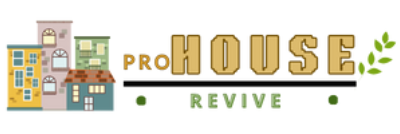Living in a duplex has its benefits. You might share a wall with a neighbor, but each unit usually feels private. Until water shows up. At CRBR, we’ve seen countless cases across Chico, Redding, Yuba City, and Sacramento where water damage on one side of a duplex quietly spreads to the other. And most of the time, neither side knows it’s happening until the problem is too big to ignore.
The issue starts with how duplexes are built. Most share at least one wall, and inside that wall, there are pipes, wires, insulation, and sometimes air vents. If a water pipe break happens in Unit A, the water doesn’t just stay there. It moves. Gravity pulls it downward, and pressure pushes it sideways. In one Yuba City duplex, a slow leak from a bathroom in Unit A had soaked into the shared wall. Unit B didn’t notice anything until a musty smell appeared in the bedroom.
These shared walls are not waterproof barriers. In fact, they’re often made of the same drywall, studs, and insulation you’d find in a regular interior wall. That means water can travel through easily. In Redding, a clogged drain overflow in the kitchen of Unit A caused water to pool along the baseboard. It ran under the shared wall and into the closet of Unit B, soaking into the carpet and causing mold to grow.
One of the trickiest things about duplex water damage is that each unit might not have access to the source. If Unit B starts to smell mildew, they can’t just knock down the neighbor’s wall. That’s why we use moisture meters and thermal cameras to track exactly where the water has gone. In Sacramento, a toilet overflow cleanup in one unit led to damage in the other’s hallway, bathroom, and pantry. Neither side had seen visible water—but it was there.
The damage doesn’t stop with wet walls. Water also affects the structure inside that shared space. Wooden studs can swell, insulation can become a sponge, and metal can rust. In Chico, a burst pipe damage cleanup job showed this clearly. A pipe in Unit A froze and burst. The water traveled through the wall and soaked into the drywall of Unit B. Even though the drywall felt dry on the outside, the wood inside was still damp, and odor began to spread days later.
Sometimes the water starts from above. We handled a roof leak in a Sacramento duplex where the water entered through the attic and flowed along the framing. It reached the shared wall and ran down into both units, affecting ceilings, walls, and even the hvac discharge line in one unit’s closet. The homeowners had no idea how wide the problem had become until we opened up the attic and traced the damage.
Even appliances can cause this kind of cross-unit problem. In Redding, a dishwasher leak in Unit A had slowly dripped into the shared kitchen wall. Months later, Unit B noticed warped baseboards and a soft spot on the floor. Our inspection revealed long-term moisture that required full floor water damage repair and appliance leak cleanup.
Sewage issues are even worse. One Sacramento case involved a plumbing overflow cleanup from a laundry line in Unit A that clogged and backed up into the wall. That caused a sewage smell and moisture issue in Unit B’s hallway. Because the blockage had happened on the other side, Unit B had no idea what had caused the sudden odor until the wall had to be opened.
We’ve also seen storm and wind damage cleanup lead to shared wall issues. When wind removes shingles or damages siding on one side, water often enters through a crack or seam. In Chico, rain entered Unit A during a storm and ran behind the siding, eventually soaking the insulation in the shared wall with Unit B. No one saw water dripping—but both sides reported that their walls felt cold and damp to the touch.
It’s not just shared walls either. Shared plumbing lines are common in duplexes. In Yuba City, a main water line break under the building caused water to rise up through the foundation. Both units had soaked carpet and soft flooring, even though neither had seen the leak happen. We provided water damage cleanup and coordinated with both property owners to handle repairs properly.
Shared HVAC systems can also cause hidden problems. One unit might have a leak in the attic system that spreads moisture to the ductwork of the other unit. That happened in a Chico home where we performed an emergency water restoration after water from the unit above dripped into the lower unit’s duct system.
Sometimes the problem isn’t water—but smoke. In a fire damage cleanup job in Sacramento, smoke from a garage fire in Unit A traveled through the attic and entered Unit B’s bedrooms. We had to provide smoke damage cleanup and deodorize both units, even though only one had burned.
Shared walls also hide the damage to stored items. In Yuba City, a personal property restoration job was needed after water from the neighbor’s unit soaked into a linen closet. Towels, photo albums, and keepsakes were damaged without warning.
At CRBR, we understand how duplexes work. We treat every call with care, whether it’s a shower & tub overflow, kitchen sink overflow, or sewage removal & cleanup. Our team knows that what happens in one unit often affects the other, and we take steps to find and stop the damage completely.
If you live in a duplex and smell something musty, see stains on your wall, or feel a soft spot in the floor, don’t assume it’s your problem—or your fault. Let us inspect the space, find where the water started, and restore both the visible and hidden damage before it spreads. Your walls may be shared, but the solution has to be complete.
